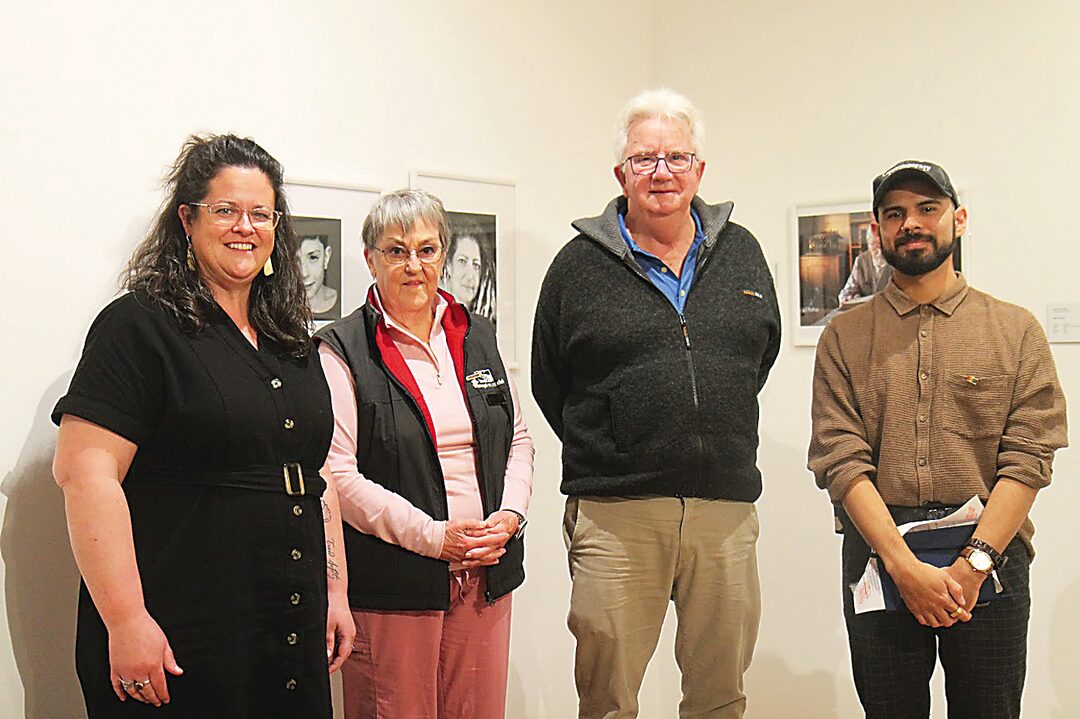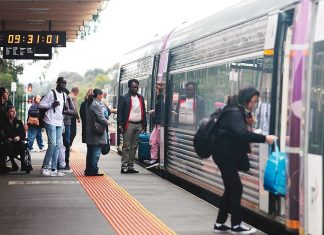By KATRINA BRANDON
LOOKING through the lens, Latrobe Regional Gallery (LRG) is hosting the annual 2025 Gippsland Interclub Photography Exhibition.
The exhibition is a collaboration of works from members of Gippsland’s six community photography clubs, showcasing diverse depictions of the urban, rural and coastal landscapes and communities of Gippsland and southeast Victoria, highlighting the technical skills and creative talent of local photographers.
Up the stairs and circulating the top part of LRG, the photographs are sorted by the different clubs involved.
On August 19, which was World Photography Day, the gallery hosted a panel, where curator Juan Rodriguez Sandoval led a question-and-answer session with Gippsland-based photographer Karli Duckett and Warragul-based photographer Ruth Burleigh.
Zooming in on Ms Duckett’s and Ms Burleigh’s photography careers, a crowd of 20 joined the conversation and lit up the discussion on the future of photography.
“(The exhibition) is a wonderful opportunity for us to give back and further encourage all these wonderful groups that have come together to supply some wonderful exhibitions,” Mr Rodriguez told the group.
The exhibition is open until September 21.
Karli Duckett
WEARING multiple hats, Karli Duckett is a Gippsland-based photographic artist and healthcare professional, whose work explores the quiet power of everyday moments.
Working with the manifesto The Good Side, Ms Duckett aims to create visual narratives that honour the complexity, dignity, and beauty of people, places, and communities, particularly those often underrepresented in mainstream imagery.
Ms Duckett’s photography has been featured in regional publications, including Gippslandia and Celebrate Network. Alongside her commercial and editorial work, she develops fine art projects and limited edition prints that celebrate slow, thoughtful observation.
An active advocate for the Gippsland art community, Ms Duckett is a current member of the South Gippsland Arts Advisory Committee, and looks forward to an Art Cube residency in Leongatha this month, featuring The Humankind Project. The project places a strong emphasis on community connection, visibility, and sharing local stories.
Bringing Ms Duckett behind the camera, her high school history teacher helped bring passion to the lens.
“I had a very eccentric high school teacher,” Ms Duckett told the group.
“Mr Conquest, who was our history teacher, instead of teaching us history, he used to take us into the dark room and let us run around the school, rounds of cameras and develop films and things in the dark room. He was a photographer himself.
“The dark room is definitely a very easy place to fall in love with photography.”
While Ms Duckett was passionate about photography, she jumped into the healthcare system and put away the camera to provide income security for herself.
About five years ago, Ms Duckett reached out to the arts officer at South Gippsland Shire Council. At the time, the arts officer was putting into place an art project, the Great Southern Rail Trail, and was pairing farmers with artists. The artists would go onto the farm properties and develop their own concept of an installation, with the idea being that people could come from anywhere and see the art.
Since then, Ms Duckett has worked with local governments on community-based projects and collaborated with several agricultural companies, documenting their farmers and creating stories for them.
Ms Duckett told the crowd that the work done in the community is built on real connections.
“I have also been gifted a couple of really amazing opportunities to do longer projects that are also very deeply in community,” she said.
“These two programs are probably the best of the long-term projects that I was able to work on. So this was a project that wasn’t my conception. I was good enough with the idea that it was really hashed out. But it was celebrating some of our fabulous ethnic women. It really delved quite deep into some big themes.
“We had people who were involved with environmental projects, there were discussions on domestic violence, there were farmers, and it became such a broad range of women, and we did end up bringing them all together at the end to celebrate people. We would often talk and talk for quite a while, and then we started using the camera.
“I’ve always been very interested in the human experience. That also ties back to my healthcare background. Although I had moved on from healthcare, I still work with it, and it has been incredibly formative in shaping my current perspective. I’m still always curious about people and their stories and my own share of myself.”
Ruth Burleigh
PARENTS have an influence on what their children become inspired to do, and Ruth Burleigh was no exception.
Being inspired to jump into photography, Ms Burleigh’s father was passionate about photography but held it as a hobby rather than a career. It wasn’t until later that Ms Burleigh became serious about photography, when she started working as a press photographer, a position she held for more than 10 years.
Having retired from the Warragul & Drouin Gazette about 20 years ago, Ms Burleigh decided to further her education in photography. Ms Burleigh’s enrolment in the Melbourne School of Art marked the beginning of her journey to create the exhibition and book, Living History.
In August 2001, Ms Burleigh first conceived the idea for Living History, which involved photographing as many people living in the Neerim District who had helped shape the district into what it is today.
Ms Burleigh had three months to visit, interview, photograph, and develop and process all these images. When making arrangements to see these volunteers, she asked if they would be willing or able to be photographed wherever possible in the environment in which they were carrying out their voluntary service. Many of these people were in their senior years and no longer working; in such cases, she would photograph them in their home environment.
In 1991, Ms Burleigh joined the Royal Camera Club and has enjoyed her time with various projects.
“I’ve either been on the committee in one form or another and I love it. It’s my passion,” she said.
“I was out at the convention talking to various delegates through the convention of other clubs, and I mentioned to them, what do you think of the idea of having a little exhibition with all of the camera clubs in Gippsland. Each club presents 10 images, and it’s rotated (from each club) each year.
“It has been going on for about 14 years.”
With help from LRG, Ms Burleigh acknowledged their hard work in getting all the behind-the-scenes details (such as securing backing for each photograph) done for the exhibition.
Sparked into conversation, Mr Rodriguez questioned the future of technology, in which Ms Burleigh shared her views.
“Photography is something that phones are fabulous for everybody – they have their disadvantages, but they also have their advantages,” she said.
“I used to go riding up in a high country a lot, and it wasn’t until I joined with the camera and started walking through the high country that I saw things with a different eye. People in our club were pointing out little orchids and stuff. I didn’t even see them before I walked over them, but they were pointing out, and so my love of photography is changing.”











